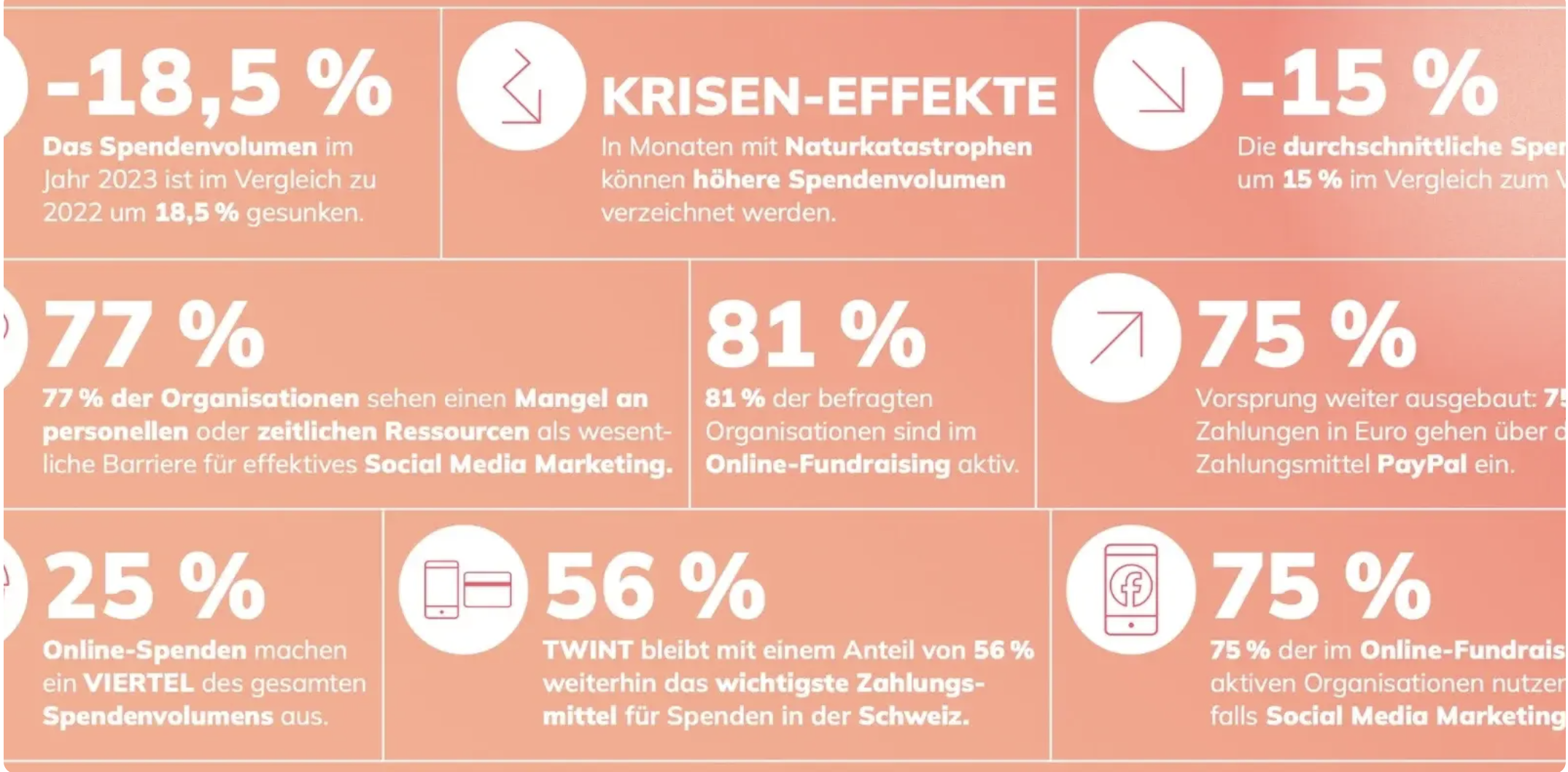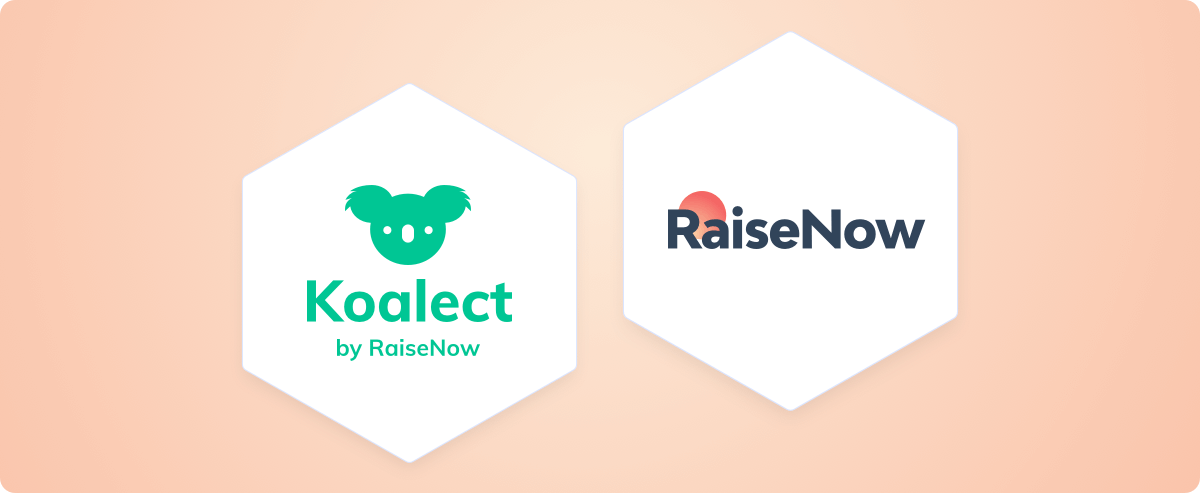4 bicycles for World Bicycle Relief at the Berlin-Brandenburg fundraising day
Summary of the keynote speech by RaiseNow & World Bicycle Relief at Fundraising Day Berlin-Brandenburg 2025
"Who would have thought that a short live demo would turn into four bicycles for World Bicycle Relief (WBR)?" that is how Fabian (RaiseNow) concluded his presentation together with Eva Danner from WBR at the Fundraising Day in Berlin-Brandenburg (organized by Fundraising-Magazin) - accompanied by applause from the audience and visible joy from Eva. A small test campaign as part of the presentation "Turning data into donations - The Fundraising Study 2025 and the potential of Community Fundraising" turned into an impressive demonstration of what community fundraising can achieve.
But let's start from the beginning: how does one lecture turn into four bicycles? Not by magic, but through the principle of Community Fundraising. Fabian and Eva used the results of the Digital Fundraising Study 2025, which RaiseNow presented at Fundraising Day, to illustrate how this works and which key trends are currently shaping fundraising.
For anyone who wasn't there, here is a summary of the most important findings - from data-based fundraising to the strategic importance of community.
Who is World Bicycle Relief?
For many people in rural, low-income regions, their own feet are the only means of transportation. Long distances turn even everyday tasks – such as getting to school, work, a health centre or transporting goods – into major challenges. World Bicycle Relief addresses this problem with a simple yet effective solution: sturdy, durable bicycles. With the so-called Buffalo Bicycle, specifically designed for rough terrain and carrying heavy loads, people gain new mobility and the ability to move their lives forward under their own power.
WBR pays special attention to girls and women, who are particularly disadvantaged due to limited access to education, health and employment. Around 70% of the bikes therefore go specifically to them. To ensure that the impact remains sustainable, WBR trains local mechanics and sets up buffalo stores to provide maintenance and spare parts. This creates jobs and ensures that the bikes remain usable in the long term.
Part I: From data to practice
The Fundraising Study 2025 provides a wealth of insights into digital donation behavior. Fabian and Eva showed how the figures can be applied to day-to-day practice - and how important honesty, user-friendliness and community approaches are for sustainable success.
Recurring donations remain stable
The data: Recurring donations accounted for 8.6% of the total online donation volume in 2024. Large organizations in particular benefited from this with a share of 11.5%, while medium-sized organizations accounted for 1.7% and small ones for just 0.4%. This is mainly due to the resources available: large organizations* can invest in retention strategies and use technical options such as customizable donation forms or default settings for recurring donations. Small and medium-sized organizations are more dependent on one-off donations.

In practice: WBR gained 13% of its total online donation volume via recurring donations in 2024 - slightly above average. According to Eva, long-term donations are based on trust: Organizations need to show impact - through honest storytelling from the project countries, consistent communication and the courage not to tell over-staged stories. "Honesty creates a bond with the cause," she concludes.
High donations at the end of the year
The data: December and November remain by far the strongest months for digital fundraising: 15.7% of the volume was attributable to December and 10.6% to November in 2024. Large organizations in particular benefit disproportionately from this, as they can systematically exploit the emotional momentum with planned end-of-year campaigns, larger budgets, reach and strong brand awareness. Smaller organizations often miss out on this potential - not due to a lack of relevance, but simply due to a lack of resources.

In practice: WBR showed that consistent communication can have a big impact: 37.9% of annual online donations come from the year-end campaign. This is both a blessing and a curse, according to Eva Danner - if something goes wrong or doesn't go well in the year-end campaign, funding for the following year is at risk. Nevertheless, she emphasizes the importance of such campaigns: success factors were a doubling of donations by major donors at the start of the campaign, weekly emails with narrative content, interactive actions by ambassadors and further doublings on Giving Tuesday and at the end of the year. Consistent communication led to strong results.
Mobile donations dominate
The data: More than half of all online donations - 53.8% to be precise- came via mobile devices in 2024. However, while mobile donations are made more frequently but in smaller amounts, fewer transactions are made on desktop, but larger and deliberately planned donations are made. For organizations, this means optimizing their forms and touchpoints for both mobile and desktop.

In practice: the benchmark for mobile donations is online shopping, emphasizes Eva. Donations need to work quickly and easily - especially on smartphones. When donors access the donation pages via social media ads, for example, they expect the same ease of use as when paying in online stores. User-friendliness, clear web design, simple donation forms, quick payment options, immediate confirmations and consistent follow-up communication are key. Donors will only stay on board if the entire process works smoothly. At WBR, the proportion of desktop users was just over 50% in 2025 - and falling.
Read more data & practical tips from fundraising experts in the Digital Fundraising Study 2025!
Part II: Community Fundraising - empowerment instead of acquisition
There are challenges for NPOs - as the fundraising study clearly shows. In times of economic tension, global and local crises, declining reach of traditional communication, decreasing willingness to donate and dwindling trust in NPOs, Community Fundraising is more valuable than ever. Eva emphasizes her understanding of these challenges, while the audience nods in agreement.
An important addition for WBR is therefore to use Community Fundraising as a relevant donation channel. WBR has been using Community Fundraising - also known as peer-to-peer fundraising - for several years now.
What is Community Fundraising?
Community Fundraising turns passive donors into active supporters. They become advocates for the organisation – bringing in their own story, network and motivation. Community Fundraising is a form of fundraising where supporters take action themselves to collect donations on behalf of an organisation. They organise their own activities, dedicate personal occasions or use events to launch donation appeals – digital, visible and effective.
A lot is possible with Community Fundraising: social commitment is made easy - from sports challenges (charity runs, triathlons, hikes) to birthday campaigns ("I wish for donations instead of presents"), anniversaries and personal events (wedding, company party, retirement) to employee giving, product sales and charity stores, ticket sales for events, crowdfunding (with a defined goal) and crowd voting (without financial commitment).
Examples of successful Community Fundraising at WBR
-
The Longest Ride: Two young women cycle across the American continent, tell their story on social media and mobilize 269 supporters, who together donate 25,000 euros.
-
The Alt Tour: A professional athlete rides the route of the Tour de France as his own project. 7,211 supporters contribute a total of 613,479 euros - a campaign that picked up on the longing for community shortly after coronavirus.
-
60th birthday: a private celebration becomes a fundraising campaign. 19 supporters donate a total of 1,597 euros. The focus here is less on the sum and more on the realization of how community can have an impact on a small scale.
-
Schools: School campaigns are particularly important for WBR. The FLG grammar school collected 6,291 euros with the support of an entire community - and attracted a lot of media attention at the same time.
What does the term "community" mean for WBR?
Eva: "For WBR, the term community two sides - the brilliant fundraising community and the communities in our program countries. Cycling connects people. WBR often works with passionate athletes and cycling groups - whether they are training on virtual platforms or crossing entire continents. Community here means doing something together and celebrating success as a group. And then there are the communities in our program countries: This is exactly what WBR does all this for. We must never lose sight of why we are sitting here (at the desk). These local communities are strong and impressive - characterized by cohesion, (bike) sharing and mutual trust."
How important is Community Fundraising for WBR?
Eva: "More important than originally thought. WBR has started to analyze its own data more closely and sees that peer-to-peer fundraising (P2P) and Community Fundraising account for a significant proportion of donations. Many supporters do not donate directly to WBR, but to a specific person or story. This is an opportunity to improve the targeting and long-term retention of these donors."
WBR shows what P2P fundraising means in donation figures in two charts: firstly, the donation income (online & offline) in Germany including major donations and foundation funds, and secondly, the donations (online & offline) exclusively from private individuals - excluding foundation funds and corporate donations.

Eva answers further questions about Community Fundraising in an interview in the RaiseNow Fundraising Study 2025 !
The live demo at the fundraising day
At the end of the presentation - and to show the impact live - Fabian launched his own Community Fundraising campaign. The goal was clear and tangible: 147 euros, the price of a bicycle. RaiseNow promised to double the amount. A QR code lit up on the screen, and anyone who wanted to could simply share the link via WhatsApp or social media.
%20(7).png?width=3750&height=1250&name=Blog%202025%20Featured%20Images%20(always%201200%20x%20400%20px)%20(7).png)
What happened next was the moment when theory became practice. Slowly, the first amounts trickled in, the donation bar crept forward. Live comments appeared in real time - small messages, big impact. It didn't stop at 147 euros. The energy in the room carried the campaign forward. One bike became two! With RaiseNow doubling the amount, it was clear that a demo had turned into a real fundraising campaign that made 4 bikes for WBR possible. A tangible result - and a scene that shows what community fundraising is all about: empowerment instead of acquisition. When people share their enthusiasm and activate others, an idea becomes a movement.
Many thanks to all donors & to the speakers!
%20(12).png?width=3750&height=1250&name=Blog%202025%20Featured%20Images%20(always%201200%20x%20400%20px)%20(12).png)
*The 7,194 organizations included were divided into three groups based on their combined donation volume in 2023 and 2024:
- Small organizations: Less than 20k donation volume in 2023 and 2024 66.1% of organizations
- Medium organizations: Between 20k and 50k donation volume in 2023 and 2024 22.4% of organizations
- Large organizations: More than 50k donations in 2023 and 2024 11.4% of organizations













.png)